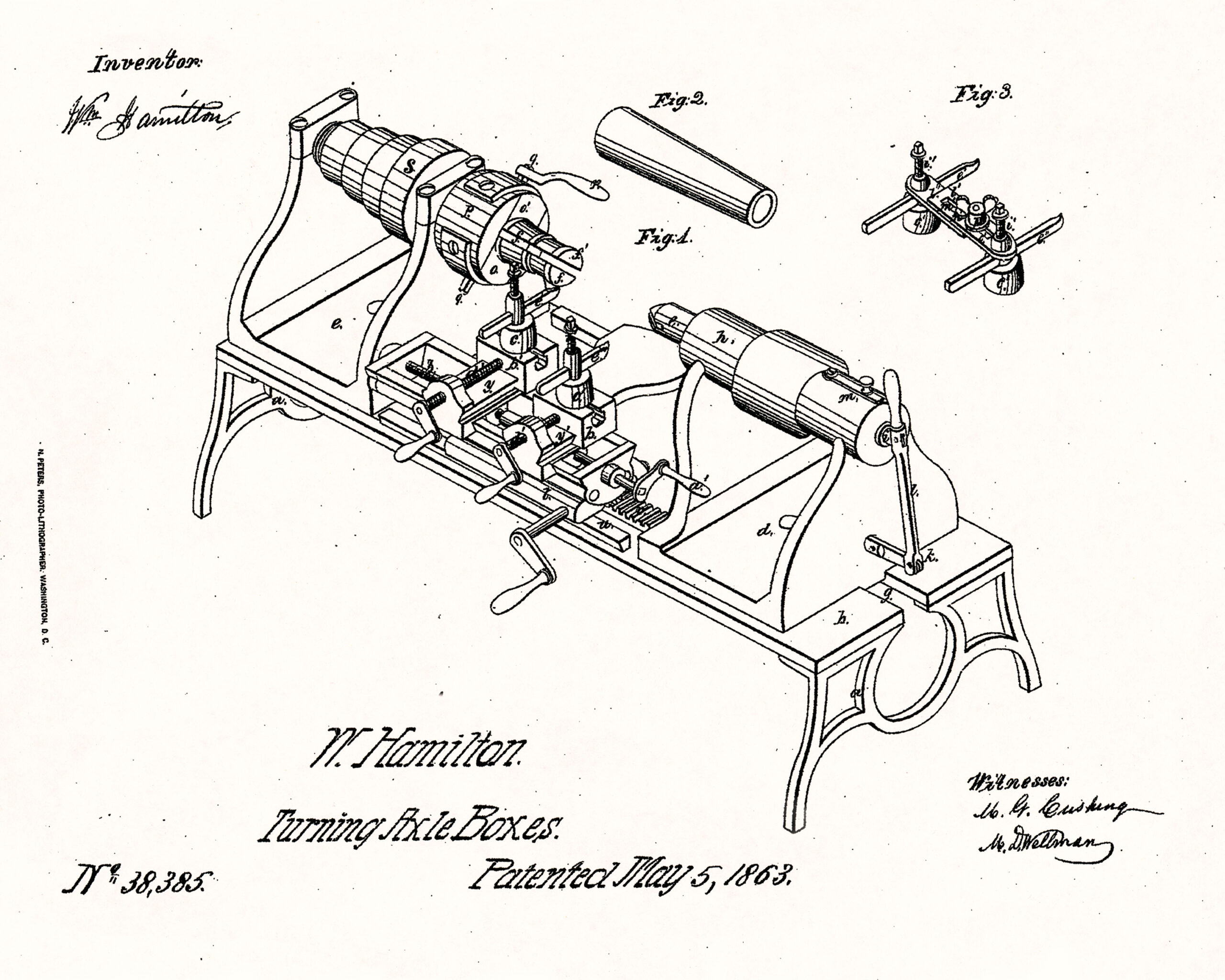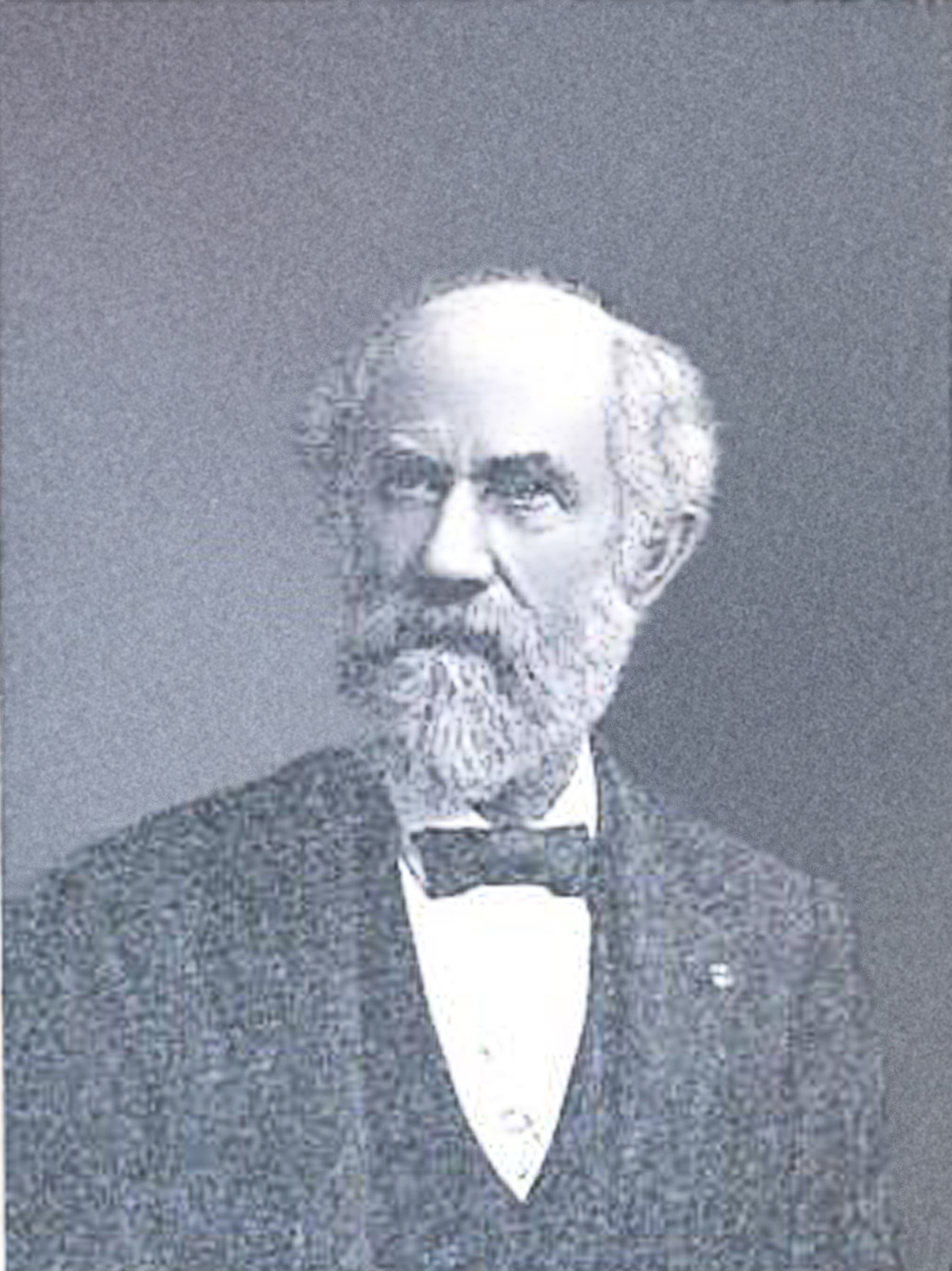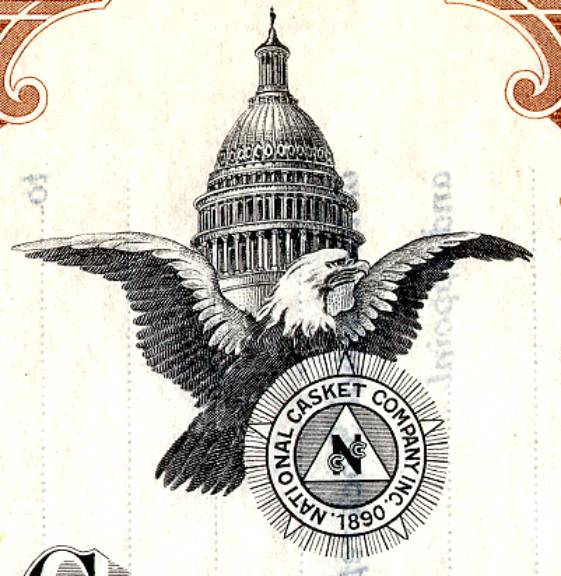- Since 1864 -
rich in history and purpose
1861

The story begins with william hamilton
In April 1861, William Hamilton is living and working in West Pittsburgh, a smokey mill town. William Hamilton is a machinist; his job is to make an integral part of the axle called a skein.
The skein is a conical piece of metal that joins the wooden axle to the wheel hub. Skeins were extraordinarily difficult to make, it took a skilled machinist like William Hamilton to make them.
Three months later, William Hamilton purchases two parcels of land in one of the best neighborhoods in Allegheny City. He built two houses, one for his family and the other for his parents and unmarried sisters.
How was he able to move from a smoky mill town to one of the finest neighborhoods in three months?
1863

The Invention (Patent)
Hamilton invented a machine which would allow skein’s to be made much easier and faster and could be made by a worker of a moderate skill level.
He patented his invention in 1863, during the Civil War, when axles were in high demand as armies mobilize utilizing wagons.
Hamilton profited from this valuable invention and began looking for another business venture to embark upon.
1836

Captain James Stevenson
James Stevenson was born in Burgettstown, Washington County, Pennsylvania in 1836. When Lincoln issued his first call for men, Captain Stephenson was one of the first to respond. He enlisted at Pittsburgh in the Duquesne Grays. He was wounded at Bull Run and again at Gettysburg.
1864

Excelsior Coffins & Caskets Works (Ready-made Caskets)
After leaving military service in 1864, he opened Coffin Rooms and established Excelsior Coffins & Caskets works.
Coffin rooms were a major change in the funeral business. Previously when someone died, a cabinet maker would measure the body and custom build a coffin upon demand. The business model was to provide a steady supply of ready-made coffins in standard sizes which they furnished at a low price.
1890

National Casket Company
Hamilton purchased Excelsior Coffin from Captain Stevenson and then merged with others to form the Nation Casket Company. They grew to become the largest manufacturer of mass-produced caskets, shipping over 52,000 caskets worldwide each year.
The National Casket Company operated 30,000-ton Verson Press. It was the largest press in the world at the time and. During WWII, it was converted to make artillery shells. Security clearance was needed to gain access into that part of the factory.
The National Casket Company was the only manufacturer of the Copper Deposit Casket. This casket was made of pure solid copper one-inch-thick and weighed 1,100 pounds. These caskets were only made here at the Pittsburgh factory and were shipped worldwide.
In the 1960’s, The National Casket Company scaled back operations.
closed their Pittsburgh location and in and moved to Kentucky the early 70’s.
1947
Nicholas J. Cardello
Nicholas J. Cardello, Sr. began his career as an electrical contractor but soon decided to open his own business as an electrical distributor. In 1947, with $327.00 and a 1941 Chevrolet, Cardello Electric Supply Company began in his living room which doubled as a counter and warehouse and grew it to be the largest independent electric wholesaler in the City of Pittsburgh.
In 1968, Cardello Electric was one of the first tenants that leased space in the building. And In 1983, Nicholas Cardello purchased this neighborhood landmark and architectural treasure.
He was also known for his philanthropy throughout his life.
1983

The Cardello Building
The Cardello Building is the product of Richard Cardello’s design vision, meticulous attention to detail, and tireless dedication to perfection. History was not sacrificed, however, for the sake of modernization. The Cardello Building combines state-of-the-art facilities with a number of industrial-era architectural features. The large wood beamed ceilings and exposed brick walls are still visible throughout the building. Manufacturing artifacts, such as unique hardware, fire doors, and iron gates have been carefully preserved. This design of blended eras, combined with the Cardello Building’s many tenant amenities, has made it a unique, urban office setting, and the only one of its kind in Pittsburgh.
